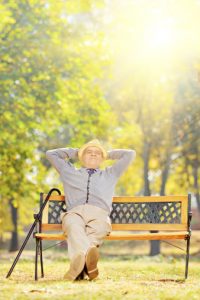
In order to lower their risk of falls and fractures, elderly people should receive sufficient vitamin D from a variety of places, the Journal of the American Geriatrics Society (AGS) now advises.
Dietary sources, supplements and sunlight can all contribute to vitamin D to levels as high as 30 ng/mL (75 nmol/L). Reportedly, this offers protection against fall-related injuries.
“In studies that achieved average serum levels greater than 25 ng/mL, falls and fracture rates were significantly reduced,” said Dr. James Judge, chair of the AGS’ Consensus Statement on Vitamin D Supplementation for Older Adults Work Group. Judge’s comments were published by Medscape Medical News.
Incorporating “high-quality research” and the input from several medical organizations, the consensus statement aims to help community-dwelling and institutionalized older adults receive adequate vitamin D from all available sources.
Every day, Americans reportedly take in 150 to 225 vitamin D units. But levels are typically higher during the summer and fall seasons — an estimated 1,000 IU per day. Obese people, however, have lower vitamin D levels and require more supplementation regardless of the time of year. Deeper pigmentation is associated with lower vitamin D levels, too, but this requires further study.
RELATED READING: Vitamin D: The New Brain Vitamin
Steel Up Against Falls And Fractures
Generally, adequate vitamin D levels are required for calcium absorption, which is vital for healthy bone density. It also helps muscles and nerves to work effectively. Low levels of vitamin D, on the other hand, are linked to muscle weakness and decreased bone strength, which lead to falls and fractures.
The health and well-being of older adults depend on preventing such injuries. In previous years, older adults who sustained a fall or fracture would have to enter long-term care institutions. And still, half of all nursing home residents older than 65 fall at least once every year, according to the AGS.
Hip fracture is one of the most serious consequences, causing long-term disability, untimely nursing home admission and premature mortality. Because of the economic and societal effects of these injuries, as well as the aging U.S. population, falls and fractures remain a significant public health concern today. In 2010, the direct medical costs of falls in older adults were roughly $28.2 billion.
RELATED READING: Low Intake Of This Vitamin Can Lead You To Depression
Vitamin D: A Natural Remedy
Let’s face it: When it comes to getting more vitamin D, supplements, alone, are not the answer. And sunlight exposure, which becomes significantly less efficient with age, can lead to skin cancer. But you can choose your foods more carefully.
Every day, select from a variety of sources of vitamin D. Remember that the bulk comes from fortified dairy products: Milk and yogurts provide about 100 IU per 8-ounce (240 cc) serving.
In comparison, salmon, tuna, mackerel, sardines and shitake mushrooms provide roughly 200 IU per serving. If you find it difficult to get the recommended amounts of vitamin D and calcium from these foods, a combination of foods and supplements is recommended.
Related Reading: Knee buckling treatment reduces falls in older adults